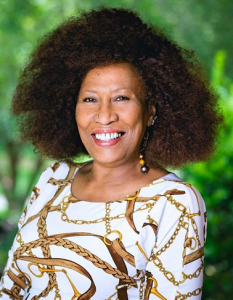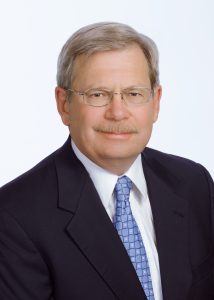Capacity Building, sometimes referred to as organizational development, is the process through which an organization develops the internal capacity to be the most effective it can be and sustain itself over the long term. In 2019, RMHF, in response to the recommendations of both classes of Equity + Health Fellows, began funding capacity building efforts supporting grassroots organizations in the region. Since then, we have engaged Gladys Washington, retired Deputy Director, Mary Reynolds Babcock Foundation, to guide us as we look to invest more deeply in organizational development. We believe that strengthening Black and Brown-led grassroots organizations is critical if we are to advance our mission of fostering an equitable and healthy Richmond region. We sat down (virtually) with Gladys and RMHF Trustee and Chair of the Program & Evaluation Committee, Dr. Bill Nelson, to hear their thoughts as RMHF embarks on this journey.


Gladys, when you led the Mary Reynolds Babcock Foundation, you and your team supported many community leaders and invested in capacity building. How do you define “grassroots organizations?” What does it mean to build the capacity of organizations led by people of color?
Gladys: Well, I don’t separate the definitions of grassroots organizations and grassroots leaders, because they’re absolutely interconnected. I define grassroots organizations as those that work to build equity and justice in their communities. Grassroots leaders are rooted in communities, with a base of fellow residents to whom they are accountable and from whom they draw support. Most grassroots organizations and leaders are working on opportunities that will be realized in low-wealth communities.
At Babcock, we figured out that there was a whole lot of merit in working with the folk who were closest to the problems in their communities and actively working to address them. We believed that capacity building with those organizations could strengthen their internal operations and make them more effective over time, to then impact the issues that were most important to them and their communities. That’s why we chose to invest in capacity building, or organizational development, as a way of supporting grassroots organizations and grassroots leaders.
Dr. Nelson, in 2018, RMHF began supporting grassroots leaders with the launch of Equity + Health Fellows Class 2. And the organization has made small investments in capacity building over the years. What role do you see capacity building, specifically with Black and Brown-led organizations, playing in RMHF’s strategy going forward? How do you expect the investments will advance health equity and reduce health disparities?
Dr. Nelson: Things will not get better until people in under resourced communities or challenging circumstances have voice and control over interventions and solutions that affect them. For that reason, building support and capacity in grassroots organizations and their leaders is critical to ultimately achieving health and racial equity.
I see the Foundation stepping up to invest more in Black and Brown-led grassroots organizations. We’re being intentional about doing so in a way that acknowledges leaders’ ideas, abilities, and experiences. We’re learning about power and movement-building. We want those in community to have presence and influence and be able to effectively mobilize to create the change they want to see in their communities.
Gladys, how did your MRBF team:
1) build relationships with grassroots organizations,
2) foster learning internally and among the participating grantee partners and
3) assess impact?
What advice do you have for foundations beginning to expand organizational development initiatives?
Gladys: It took a lot to do capacity building work. We had to have lots of conversations with folk and go on many site visits. At the end of the day, it was about building relationships and fostering trust. You can’t shortcut the process if you want to learn the good, the bad, and the ugly about an organization. We also modeled the type of relationship we wanted to have with partners. We were as transparent as we could be about our motivations, about what we could and couldn’t do, and about what we saw and didn’t see. We tried to be as helpful as possible without telling folk what to do.
We understood that if we wanted to see meaningful change through this work we would need to be patient. I appreciated that Babcock supported organizations over a good deal of time. Communities move at different paces, and the typical one-year foundation grant is not likely to have significant impact.
We worked as a team to advance organizational development and supported multiple convenings that were planned and organized by grassroots leaders and community members.
In terms of assessing impact, we got pretty comfortable acting without certainty. If we don’t take some risk, then things remain the same. As a foundation, we never grow, we never learn, we don’t figure out what works. When it comes to capacity building, some things are easier to see. For example, if at the beginning of a process an organization doesn’t have a strategic plan but at the end they do, you can see that. If in the beginning they don’t have a strong internal financial management system but at the end they are using QuickBooks for nonprofits, producing reports for their board on a monthly basis, handling their resources effectively, and withstanding public scrutiny about resource utilization, then certainly you can see those things. But there are things in organizational development, like culture, that are unwritten or harder to assess. For those things, we had to calm our desires for measurement, trust the process, and recognize what we, as a foundation, were learning and benefitting from.
Foundations have to be realistic about capacity building work. It’s not sexy or cute. It’s long-term work. But at the end of the day, we figured out that if we supported folk to be stronger and more effective in their missions, change would happen in communities. Would it be wholesale change? Maybe not. Would it be incremental change? Probably. Would an organization have staying power? We hoped so. We were a little out there, but we believed in helping organizations be a little bit stronger and a little bit better, so they could roll with the punches and continue good work in their communities.
Dr. Nelson, how has the pandemic informed or shifted your perspective about what it will take to advance health equity in the Richmond region? Why is it more critical than ever that we invest in grassroots organizations led by people of color?
Dr. Nelson: The pandemic shined a light on and exacerbated the economic and racial disparities that exist in communities. Essential workers, without power or voice to change their employment situation or conditions, have struggled to protect themselves from the virus. These individuals are more often persons of color earning a lower wage and living in communities where risk factors, like rates of diabetes and heart disease, are higher and built environment conditions contribute to poor health. We need to invest in grassroots organizations led by people of color, supporting them to create change in their communities.
Gladys, from your experience will you please share an example or two of effective capacity building?
Gladys: We worked with a number of organizations that were effective in leveraging capacity-building support. I’ll briefly talk about two.
The first was the North Carolina Congress of Latino Organizations. It started out in 2002 as an individual Latino-led organization operating in a single county. Today, it is a non-partisan coalition of grassroots organizations operating in five counties across the state. They build power for fair treatment and equal opportunities for Latino immigrants in North Carolina. Babcock provided them with organizational development support and operating support for a number of years. They grew from a team of one and a half to now a team of eight or nine working across the state.
The other one is in South Carolina. The Center for Heirs’ Property Preservation began in 2005 as a grassroots-led organization with a budget of $150,000, two people on staff and a local focus in Charleston. Their purpose is to support families to regain control of their land and to do sustainable forestry, to make that land productive for those low-income families in rural communities. Today their budget is in the millions and they have 20+ staff working across the state.
Long-term, general operating support is really, really helpful for organizations like these. It’s flexible capital and it signals to others that the foundation trusts them.
Dr. Nelson, what is your hope for RMHF’s investments in grassroots organizations led by people of color?
Dr. Nelson: My hope is that grassroots organizations will feel supported in ways that enable them to advocate for meaningful change. I hope that we see leaders, who represent their communities, with the power to affect inequitable policies and practices. And I hope that we learn from these leaders in the process.
Gladys, what is your hope for RMHF as we embark on this journey?
Gladys: Well, first of all, I’m just grateful that Richmond Memorial Health Foundation is moving in this direction. I’m incredibly honored that I was asked to help you along the way. Now the hard part really begins. As Dr. Nelson talked about, I think that it is really important that the foundation learns its low-wealth community better than it knows it now. I hope RMHF leans into the deep work and relationship building that really makes a difference. I hope that the Foundation becomes comfortable with diminishing the power imbalance between those folks who need the money and the folks that have it. And finally, I hope that the foundation, through its learning process, is willing to be pushed in a way that helps it grow.
GLADYS KRIGGER WASHINGTON recently retired as the Deputy Director for the Mary Reynolds Babcock Foundation in Winston-Salem, North Carolina. With a mission of helping move people and places out of poverty, the Foundation supports organizations and networks that work across racial, ethnic and political differences to foster greater social and economic justice in the South. Gladys supervised the Foundation’s programmatic work in 11 Southern states. Prior to joining the Babcock Foundation, Gladys was a Program Officer for the Coastal Community Foundation of South Carolina in Charleston. Gladys earned a Bachelor of Arts degree in Political Science from the College of Charleston and a Master’s in Public Administration from the University of South Carolina and the University of Charleston.
BILL NELSON, MD, MPH is a retired public health physician, having served at the Virginia Department of Health for thirty years. During his time at VDH he served as a Health Director for Chesterfield Health District, and in temporary capacities as the acting State Health Commissioner and acting Deputy State Health Commissioner(s). Dr. Nelson graduated from Colgate University with a Bachelor’s Degree in American History, attended the VCU School of Medicine, and earned a Masters of Public Health degree from the University of North Carolina-Chapel Hill. Among other appointments, Dr. Nelson serves as Chair of the Program & Evaluation Committee with the RMHF Board of Trustees. After years of service, he continues to be amazed by three things: (1) how significantly social and community determinants affect health, (2) how much work remains to be done, and (3) how satisfying it is to work with groups of people to improve our world and the lives of others.